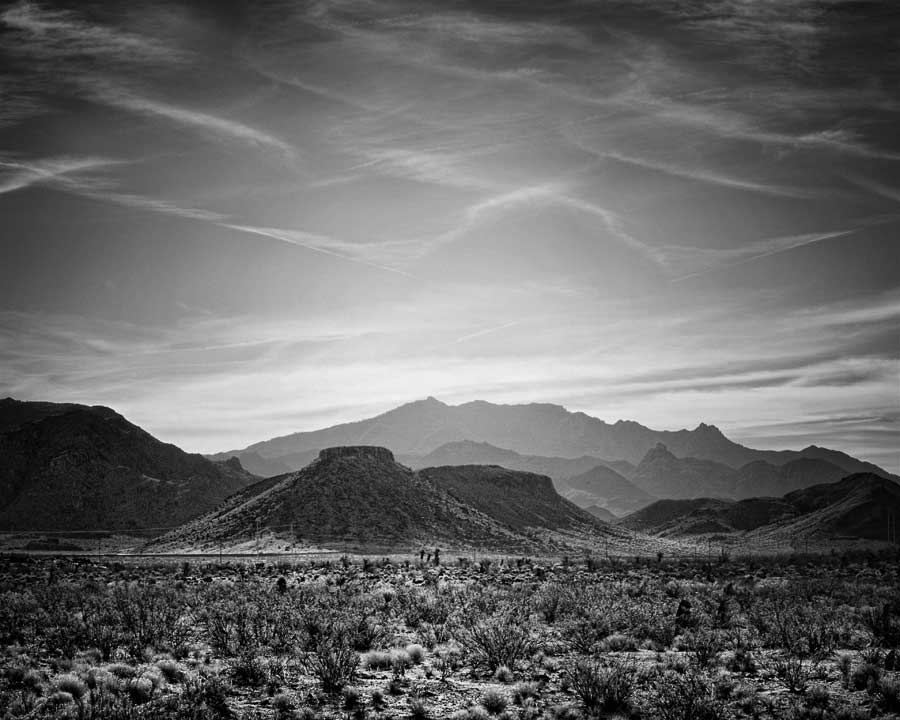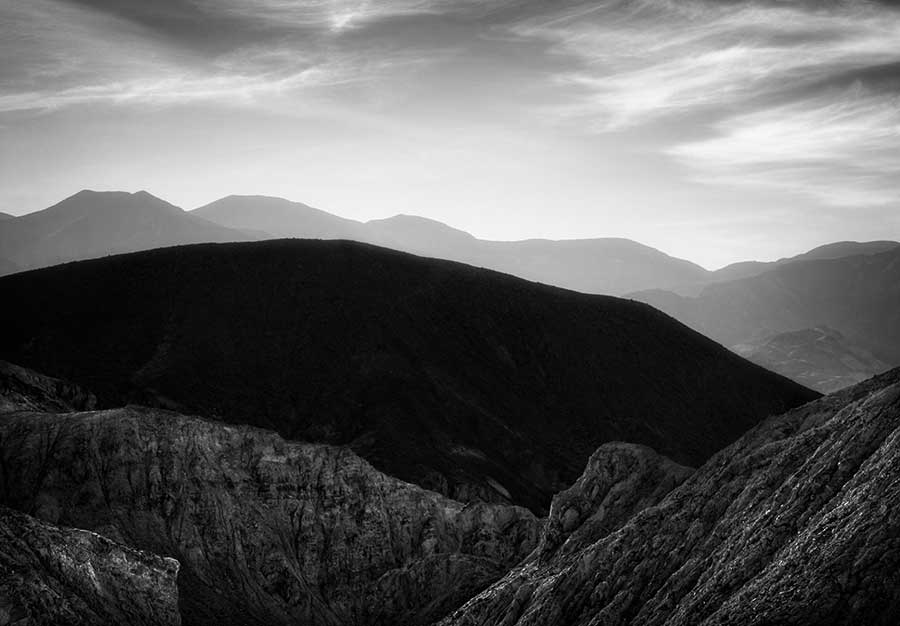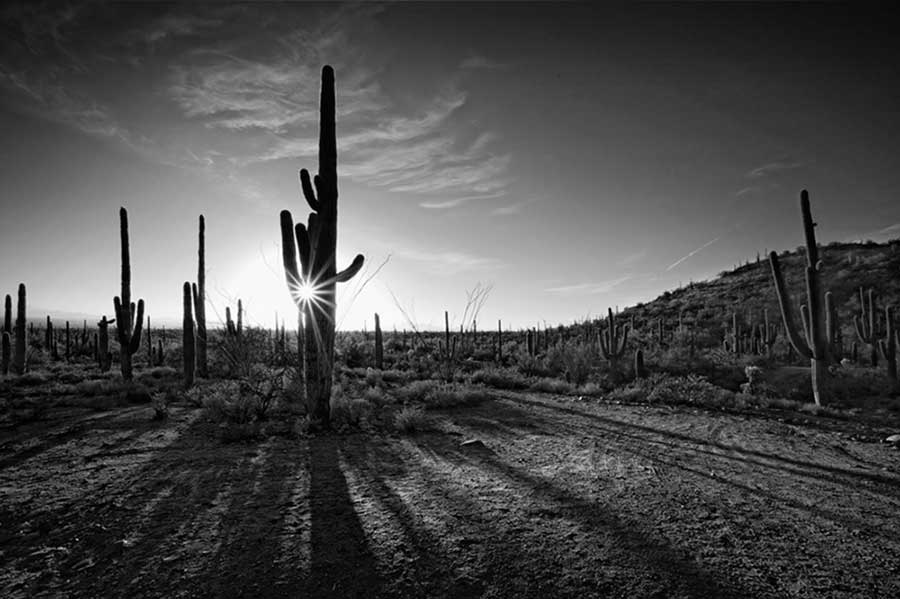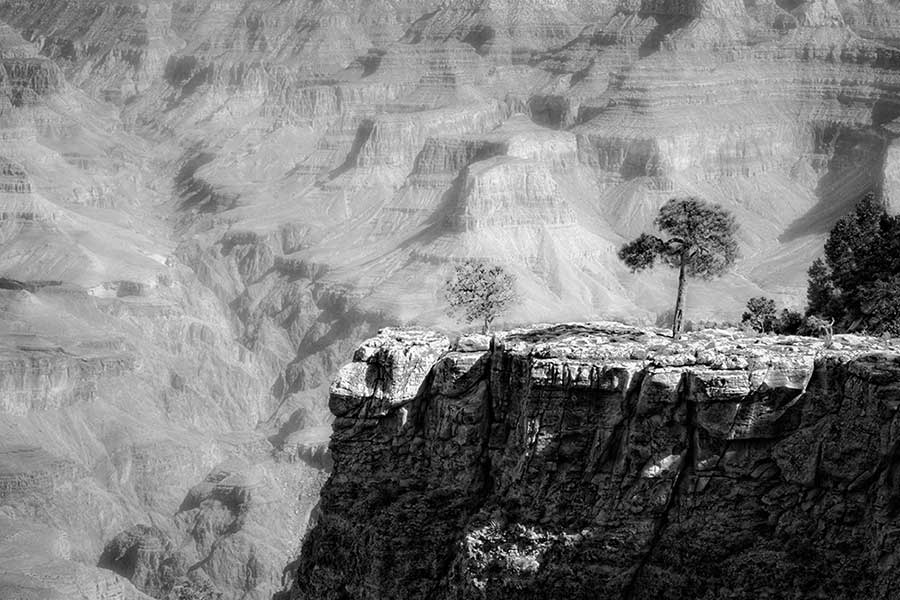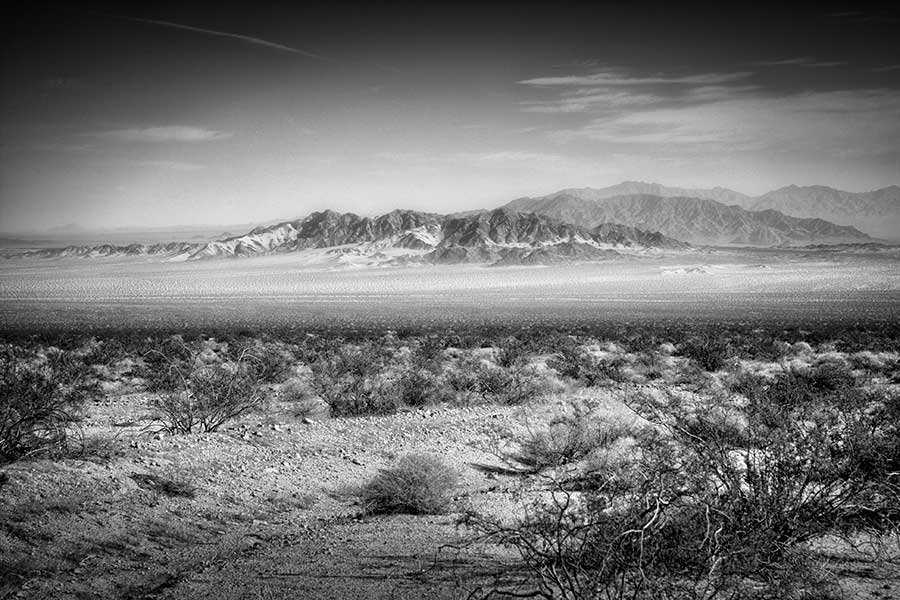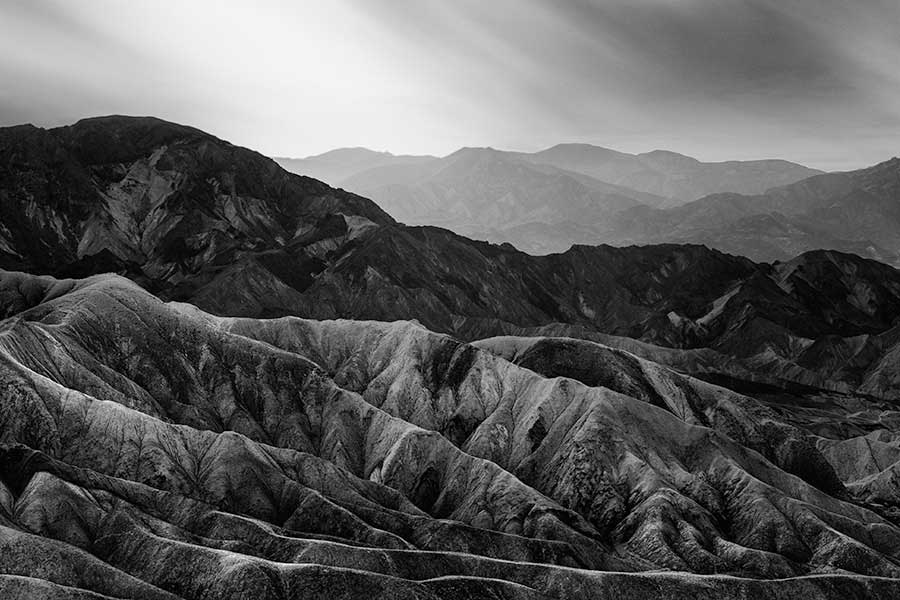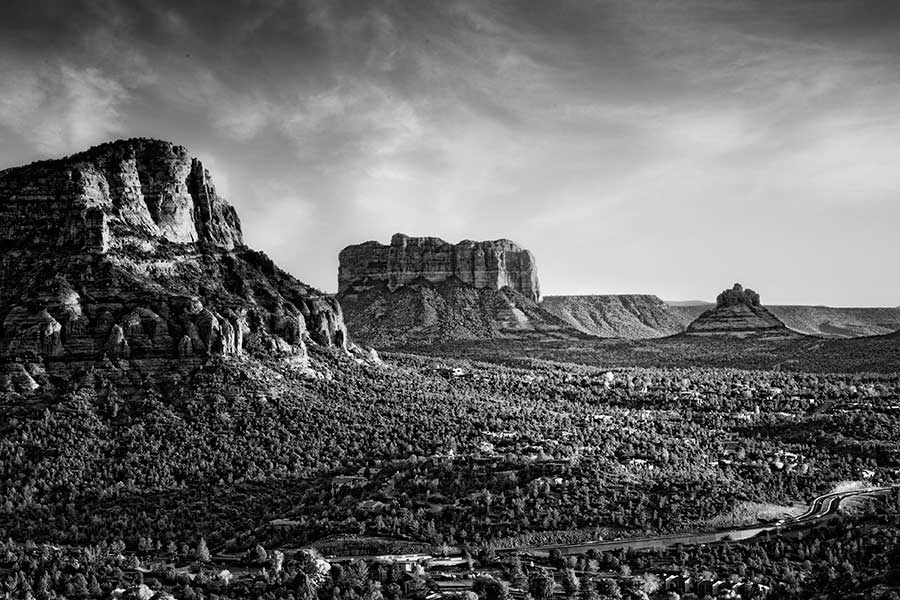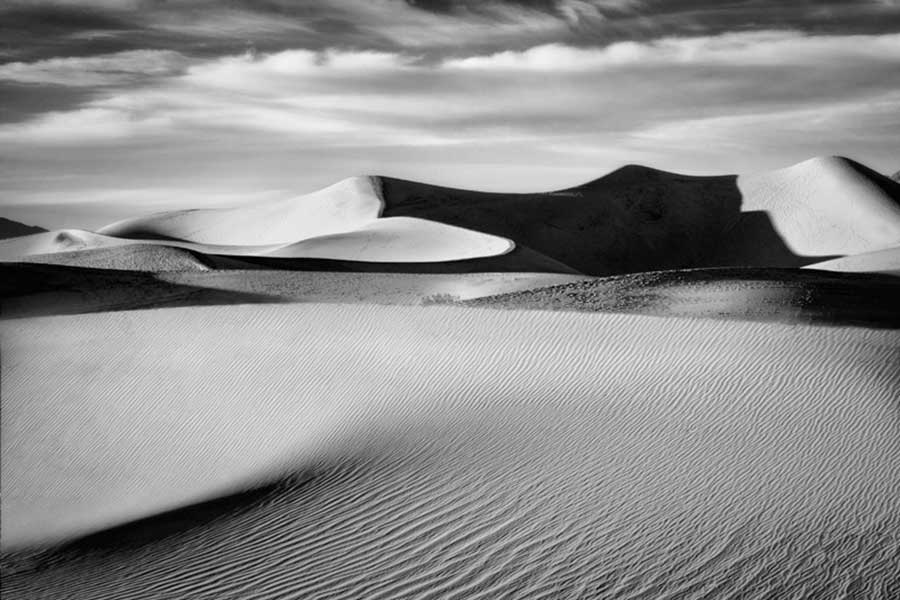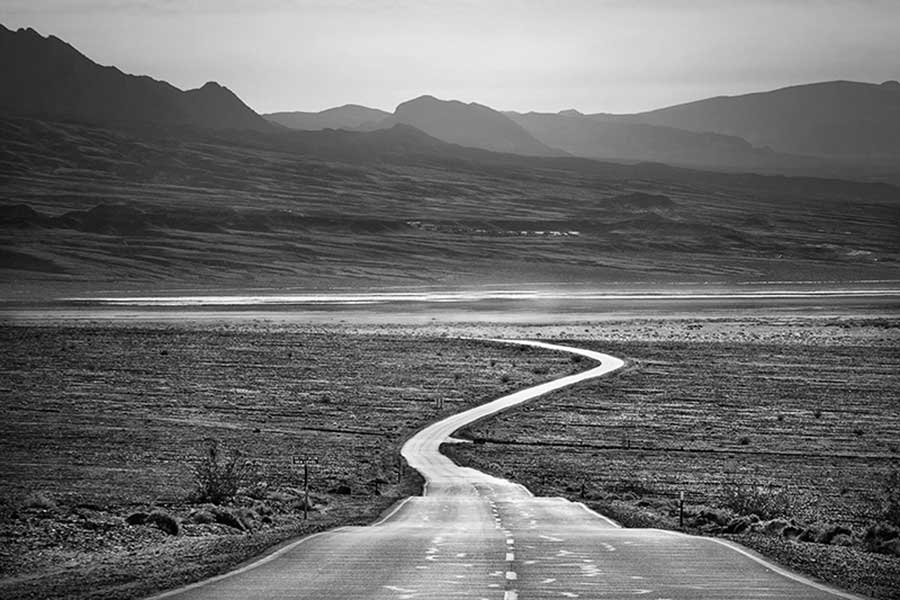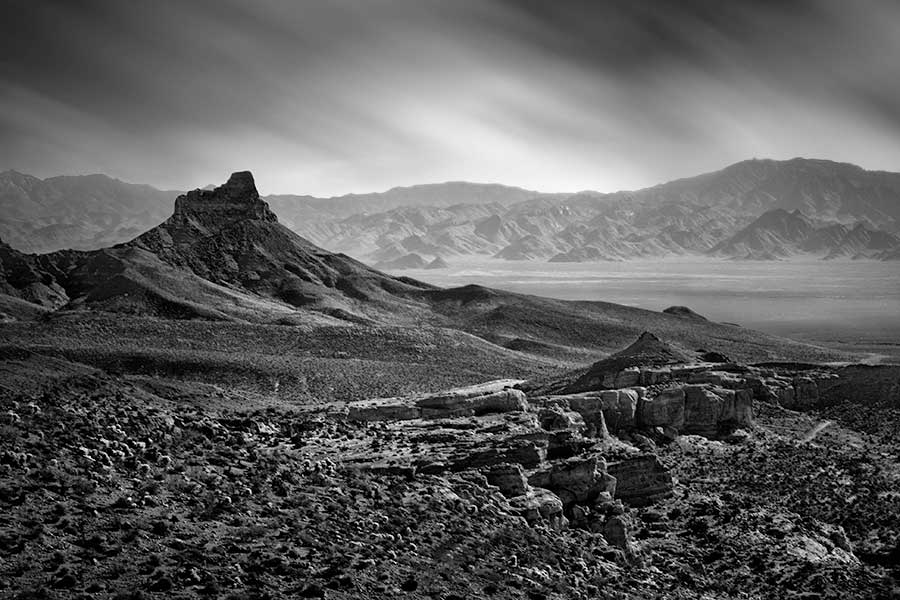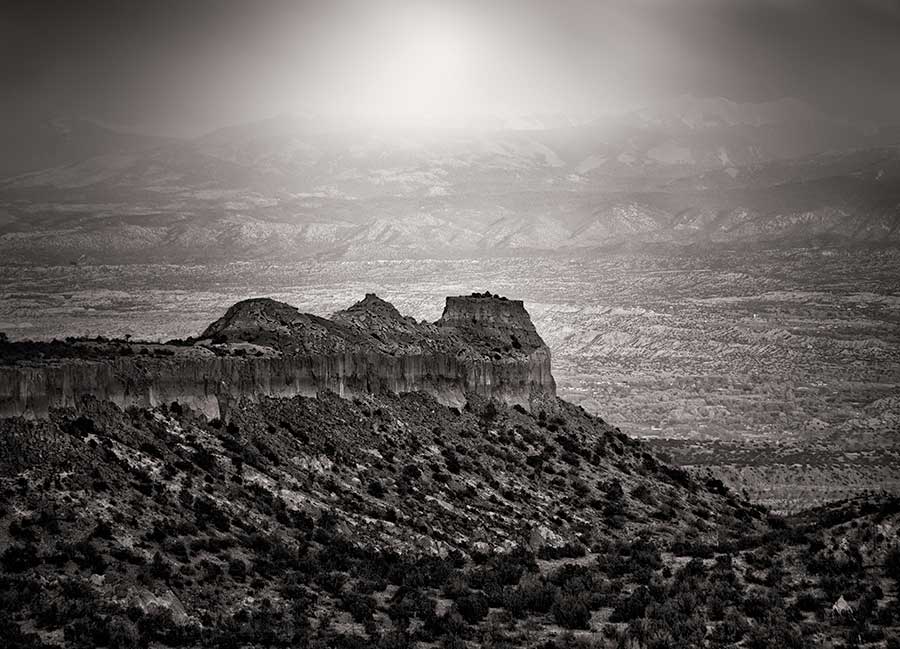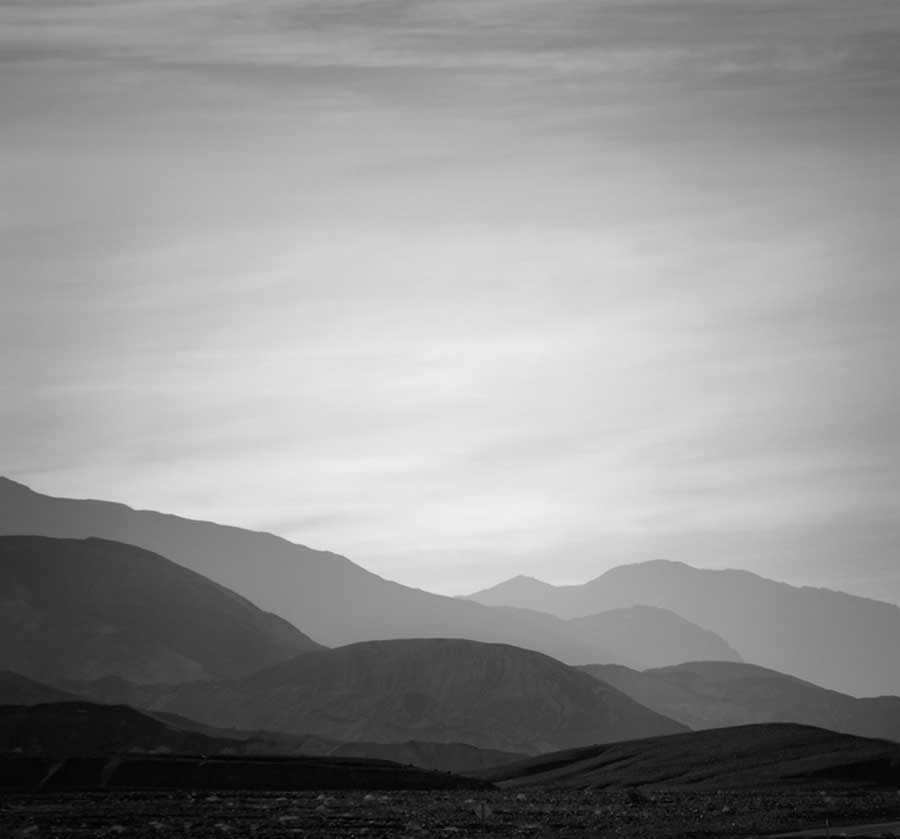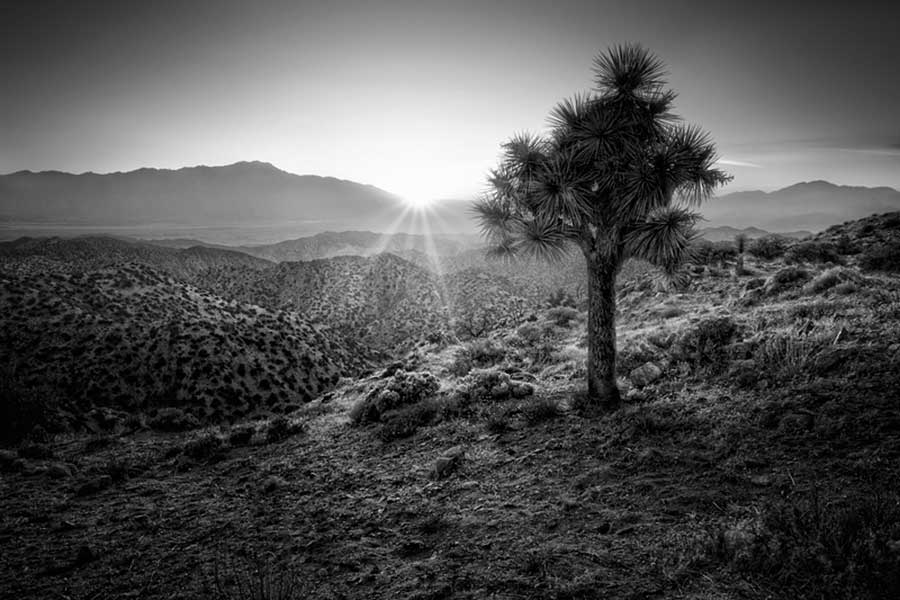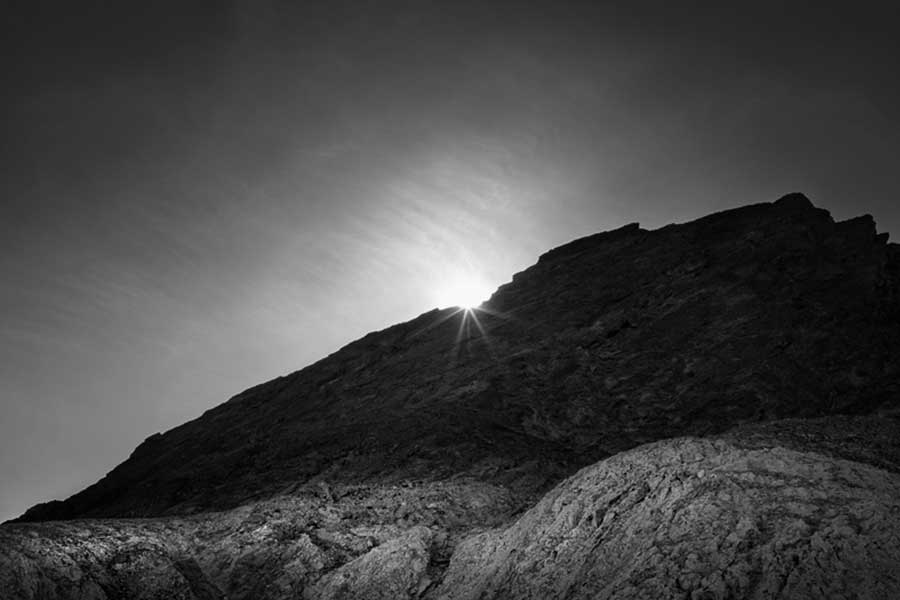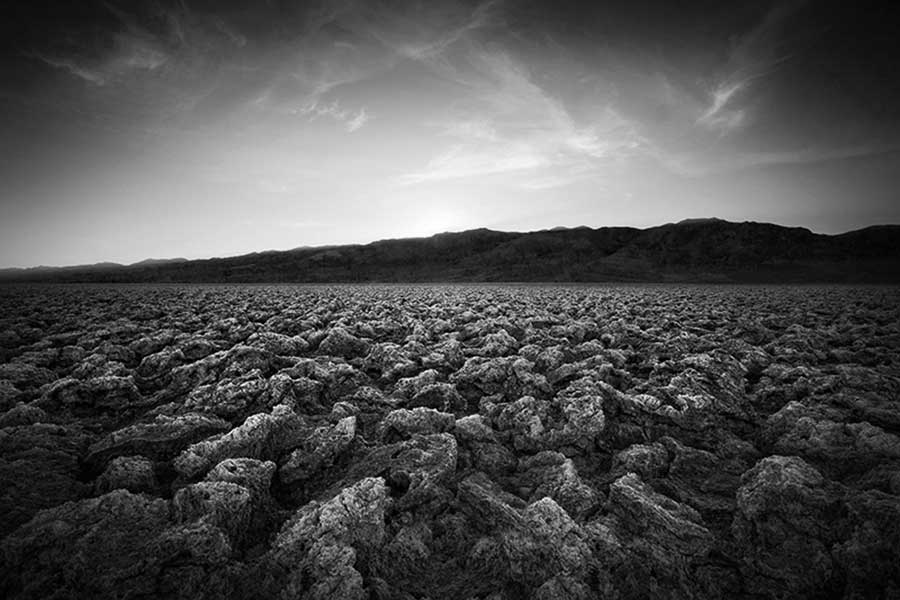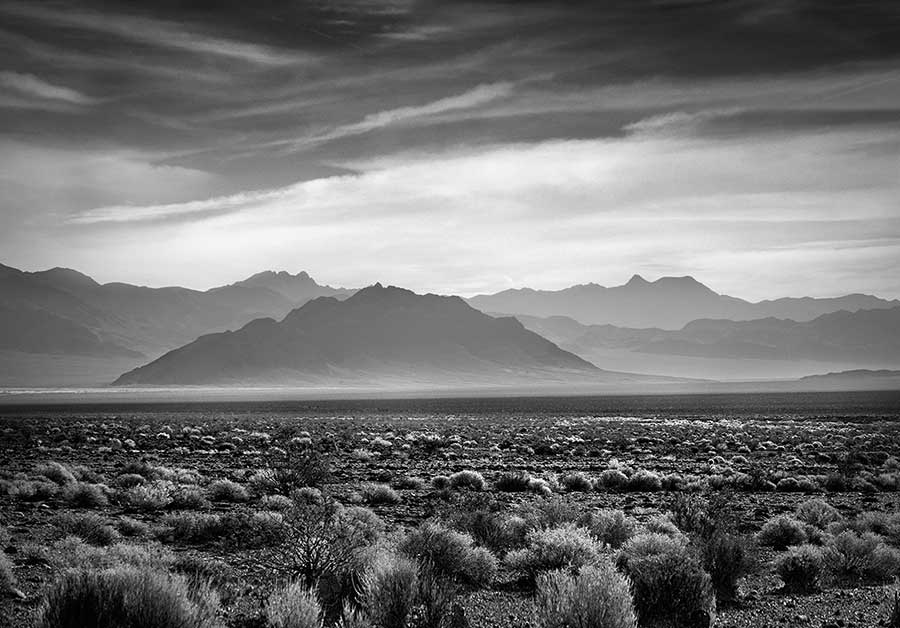“Everything has beauty, but not everyone sees it”
(Confucius)
During the winter, when many of my friends are basking in the hot Caribbean sun at such popular vacation venues as the Dominican Republic or Puerto Vallarta, I could be found roaming the remote, sunparched back roads of the California Mojave Desert.
Likewise, while most people are visiting Nevada to revel in the bright lights of Vegas, I could be found exploring the lithified sandstone dunes of Red Rock Canyon or the Valley of Fire. I am a Canadian fine art photographer whose passion is shooting monochrome landscapes across Canada and the United States. One of my favorite winter vacation destinations for photography is the American Southwest desert country.
While many of my peers often question my choices for recreation and leisure and view the desert a bleak, lifeless place, I have developed an idiosyncratic connection to the desert. This affinity goes well beyond my appreciation for the physical beauty of its landscape. It is a connection that integrates the mind, body and spirit.
It all started in 2003 on my first trip to the Southwest. I attended a photography field trip to the high desert of Sedona, Arizona. The scenery was utterly strange and surreal. I was so awe-inspired by the otherworldliness of the landscape that I decided to make it a perennial photographic venture. It has become my passion, and now I make the trip down to the southwest each winter to capture a different region of the desert’s timeless beauty.
Now, after twelve years, I have photographed vast expanses of the southwest terrain — from the Black Mountains of the Mojave Desert, to salt flats of Death Valley, to the great canyons of the Moab Desert.
While some areas I photograph may be popular with tourists, I much prefer to seek out the off-the-beaten-path venues where there are fewer people, cars, and less commercial activity. More often than not, I hire local guides to gain access to these remote, off-lying areas. In doing so, this inflates the cost of the trip but is well worth the investment in order to annex other less-traveled desert lands.
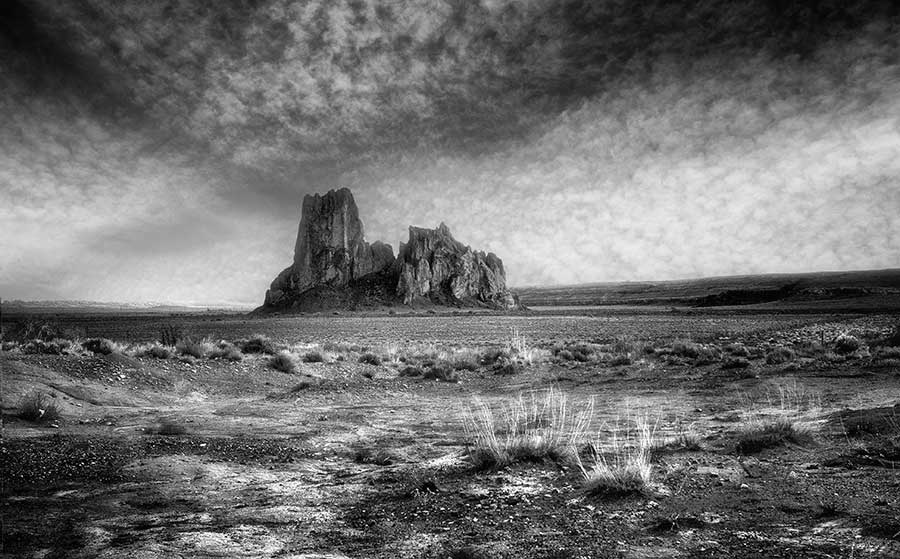
I choose to plan my trips during the winter months, usually between November and February and for obvious reasons. At this time, the desert heat is far more forgiving and more conducive to hiking and exploration. As any photographer will attest to, the cooler, comfortable winter temperatures make all the difference, especially when one has to lug around heavy photographic equipment. But even after so many trips, I still often ask myself – what is it about the desert that beckons me to capture its grandeur? What exactly is the allurement?
I have begun to realize that my annual sojourn to the desert country is more than just a photographic journey. Above all else, it has become a journey of self-discovery. An annual crusade – a sacred ritual of sorts – affording me the opportunity to stoke my creative fire and redefine my photographic vision. There is also a strong Zen connection. It starts with the sense of freedom I experience from migrating across desolate, wide-open spaces and the peace and solitude that comes from bonding with nature. The loneliness and isolation are energizing and nourish the heart, mind and soul.
Apart from the spiritual connection, there is the allure of the desert’s geological beauty. In New Mexico, you have the vast, boundless desert vistas of barren sandstone cliffs sculpted through the ages by the effects of wind and water. In Death Valley National Park, California, you find pristine, white sand dunes, artistically inspired by nature, stretching infinitely beyond one’s imagination.
Further to the south, the sun-baked, wind-swept tracts of California’s Mojave Desert where survival is tenuous but, mysteriously, can sustain life despite the extreme environment. In southwest Arizona, the majestic Saguaros populate the landscape and stoically guard the countryside like sentinels of Mother Nature. Over a third of America’s national parks are in the states of Colorado, New Mexico, Utah, Arizona, Nevada, and California and each state’s desert region boasts its unique geological characteristics. Though I’m officially on vacation when I travel to the southwest, I am not lazing around sipping Margaritas (okay, maybe a couple after sundown). If fact, photographing the desert can be very taxing on both the mind and body. There is a lot of hiking and conditions can be harsh. [Official Website]
There is also a lot of driving, and I am constantly on the go trying to catch up with the light. As a photographer, the creative use of light is one of the fundamental aspects of my desertscapes and I sometimes wait hours before the sun is in the right position to capture the shot. Each trip to the southwest is carefully planned out many months in advance. I research where I want to go and then spend considerable time reading up on the region. To gain a virtual perspective of the area, I use Google Earth to study the area further. If the venue is near or in a National Park, I will contact National Parks Tourism requesting literature and maps although nowadays most information is available online. On occasion, I may order a land survey map of an area if one is available.
I may also contact other landscape photographers for feedback on their recent experiences to the desert southwest. In the past, their advice has proven to be invaluable for providing insights such as the best vantage points to shoot a particular scene or how to access hard-toreach points of interest. Also, their Input on road conditions and road closures also come in handy. My acute sensibilities for the desert mystic are the driving force behind my continued monochrome photography. It has shaped my creative vision. The desert is a vast, desolate and timeless, and I strive to capture the emotion in each of my monochrome photos. As of late March, I have begun to plan the next trip for the fall of 2015.
Presently, I have several venues in mind but the southwest desert is vast, diverse and interminable. There is so much more to see and photograph and I have barely scratched the surface of the Great Desert. And that makes it all the harder to decide.
